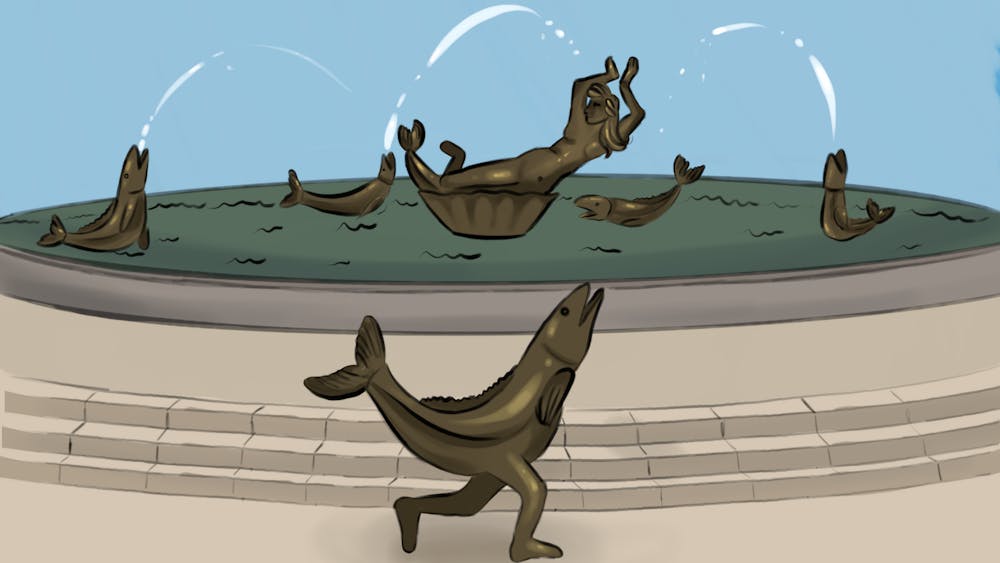Unless you’ve been living under a rock for the past few weeks, chances are you’ve already heard about the dumpster fire that is Dolce & Gabbana’s latest marketing misstep.
In a series of ad clips titled “Eating with Chopsticks,” published in advance of what was supposed to be the luxury brand’s “tribute to China” fashion show in Shanghai, a young Asian model dressed in a glitzy red gown giggles as she struggles to eat archetypal Italian foods such as pizza, cannoli and spaghetti using a pair of chopsticks.
Her dining attempts were accompanied by stereotypical Chinese music playing in the background and a male voice over offering patronizing advice in Chinese such as: “we will show you how to use these little sticks to eat our traditional Margherita pizza,” and “it is still way too big for you, isn’t it,” referring to the cannoli. These clips were soon to be hastily taken down from the brand’s social media sites.
To add fuel to the fire, screenshots featuring derogatory remarks made by Stefano Gabbana — one half of the Dolce & Gabbana founding duo – via Instagram direct messages, surfaced not long after the videos were posted. The screenshots showed Gabbana mockingly referring to Chinese people as “ignorant dirty smelling mafia” and using several poop emojis to describe the country itself.
Unsurprisingly, the videos and screenshots elicited a tremendous backlash, particularly among Chinese communities around the globe.
“Orientalism is expressed so explicitly in this ad. It is very offensive to portray all Chinese people in such a stereotypical way,” one comment mentioned in an Asia Times article read.
Out of the cacophony of voices as internet users all over the world scramble to add their two cents to the heated discussion, I find myself agreeing with the above statement the most. Call them whatever you may, but Dolce & Gabbana’s “Eating with Chopsticks” series is orientalism at its finest.
The term orientalism is coined by the Palestinian-American writer and academic Edward Said, whose 1978 book "Orientalism" defined it as a patronizing Western way of portraying and perceiving the peoples of Asia, often implying that non-Western societies are exotic, static and backwards and in dire need of Western restructuring and help. This attitude paved the way for much stereotyping that was to come.
Mainstream media, with Hollywood being the prime example, is no stranger to exoticizing Asian culture, long before Dolce & Gabbana’s tone deaf video ads and before Said published his book.
Arguably the most infamous and, sadly, one of the most enduring representation of people of East Asian decent was the mandarin hat-wearing evil genius, Fu Manchu. Created by the British writer Sax Rohmer, Manchu, the Chinese criminal mastermind, was constantly defeated by Scotland Yard commissioner Denis Nayland Smith, a walking paragon of British values but nothing more than a cheap knockoff of Sherlock Holmes in terms of literary values.
Nevertheless, Rohmer’s novels proved to be widely popular and eventually sprouted a series of films. Fu Manchu was always portrayed by actors of Caucasian descent.
Asian women, on the other hand, often found themselves subjected to the Madame Butterfly treatment. Epitomized from Giacomo Puccini’s opera “Madama Butterfly,” this perception stereotypes Asian females as dainty, waiflike and submissive, much like the dolled-up model in the Dolce & Gabbana ads, who was clearly at a loss using the chopsticks to eat the food before her and had to be told what to do by the male narrator.
Perhaps the greatest irony of the Dolce & Gabbana ads is that they came out in 2018, the same year groundbreaking films like “Crazy Rich Asians” and “To All the Boys I’ve Loved Before” were released, depicting well-rounded characters of Asian descent as all types of human beings – not just the handful of stereotypes we so often see.
Standing in dire contrast to these portrayals, Dolce & Gabbana shows us the war on cultural stereotyping is far from over.
Have we made progress? Yes. Do we still have a long way to go? Yes.






